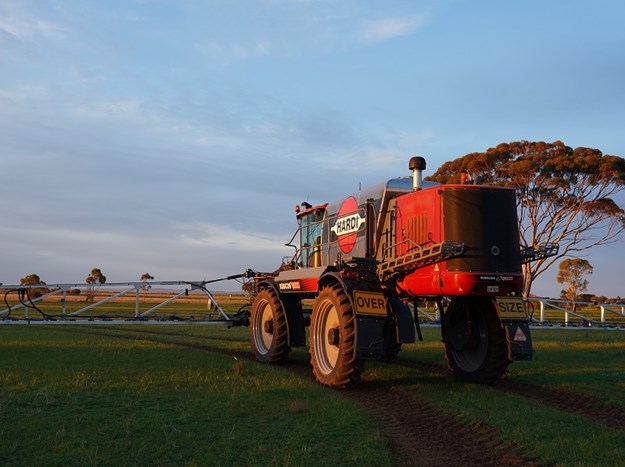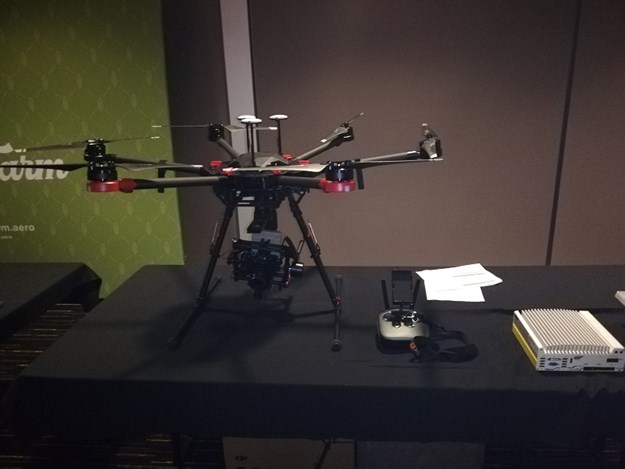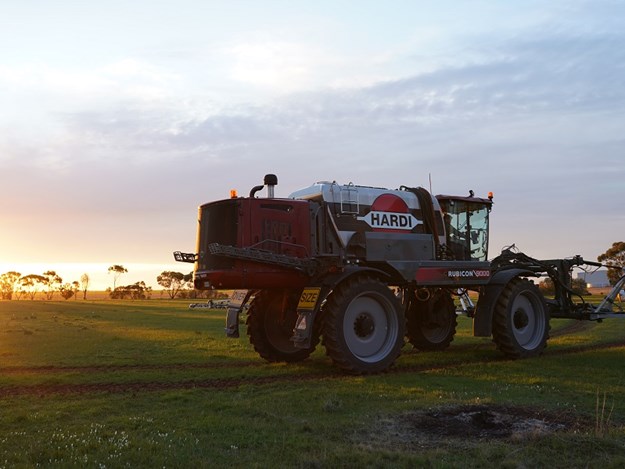Sprayer manufacturer Hardi has taken a big step into the technological space, launching a selective spraying system which it claims could reduce chemical use and costs by up to 90 per cent.
Hardi’s newest innovation, GeoSelect, marks the company’s “first step into genuine technology” with a software package that works in tandem with drone images to identify and spray exactly where weeds are on a paddock.
It uses a “decoupled” structure, meaning the images are taken by drone before being processed quickly without loss of resolution and delivering a precise map of which areas require spraying.
Multiple lightweight antennas, which are described as “rugged and waterproof”, are mounted along the sprayer’s boom to ensure precision to the centimetre when spraying, even factoring in boom deflection and weather conditions.
Crucially, GeoSelect works with standard Hardi spray nozzles.
GeoSelect was unveiled in Adelaide earlier this month and Hardi Australia’s CEO Bill Franklin said at the launch the technology had been the result of several years’ effort.
“We don’t want people to think it’s a drone-based sprayer,” he said.
“The drone is the means of capturing the image. GeoSelect is pure software.
“Our guys have written software to overcome barriers which existed previously.
“It identifies the precise geolocation of target vegetation and records that, so you get full recording of every activity and it preserves the original spatial resolution.”
 |
|
Hardi has launched its GeoSelect technology for precision spraying
|
Franklin said the decoupled structure, with imaging and spraying means being separate, had numerous advantages which had not been obvious when they first set out to create the software.
“Some of those arise from knowing exactly what there is to spray before you’re in the paddock,” he said.
“When you’re there with a camera you’ve got to drive past it before you know it is present.
“By taking the images before then, we know exactly where the targets [are] and we know how many targets are in the field so we can thereby work out how much chemical we’ve got to take on.”
Other advantages, Franklin said, included knowing in advance which areas did not require treatment and therefore saving on labour, fuel, ground compaction and machine depreciation.
The company estimates that chemical use, labour and wastage can be reduced by up to 90 per cent with GeoSelect.
In a field test run by Hardi, live data was processed with up to 5mm accuracy and a 99.7 per cent hit rate.
 |
|
Rugged antennas attached to the sprayer’s boom ensures precision when spraying with GeoSelect
|
Boom deflection can also be measured down to the nearest 0.1 degree and Franklin said this precision was crucial towards GeoSelect’s success.
“If you’re running a 48m boom or bigger you can get quite substantial deflection,” he said.
“Where your traditional sprayer thinks your boom is compared to where it actually is might be something completely different.
“GeoSelect measures that accurately – it has additional GPS sensors along the boom to give you precision and accuracy in terms of where the nozzles actually are at the point of firing.
“When we showed it to our own sales guys to start with, they didn’t believe we could get the nozzle response times we are actually getting.
“Latency in firing is automatically calculated, we can take in and consider other ambient measurements and metrics such as winds and cross-winds and all of that is processed within the algorithm and machine adjustments are made.”
 |
|
GeoSelect works in collaboration with images and data sourced from drones
|
GeoSelect can retain its accuracy even at standard speeds of between 25 and 30km/h, while it can also run effectively at night.
Data files come straight from the drone, Hardi says, and by not using shape or vector files they can quickly be compressed to just a few megabytes and transferred via a standard phone network.
“It’s about overcoming the barriers that previously existed to delivering the technology which it delivers,” Franklin said.
“That enables it to not compromise the resolution. It retains very clear images of very small weeds whereas previously you would lose that clarity.
“We can also process very comfortably images from 1000ha a day and capture and retain metadata for later use.”
Hardi will initially release GeoSelect on its self-propelled sprayers only.
It is expected to become available in either the final quarter of 2021 or first quarter of 2022, depending on supply challenges such as the global microchip shortage.
GeoSelect will be sold through Hardi’s traditional dealer networks.
 |
|
GeoSelect works with standard Hardi equipment and nozzles
|

